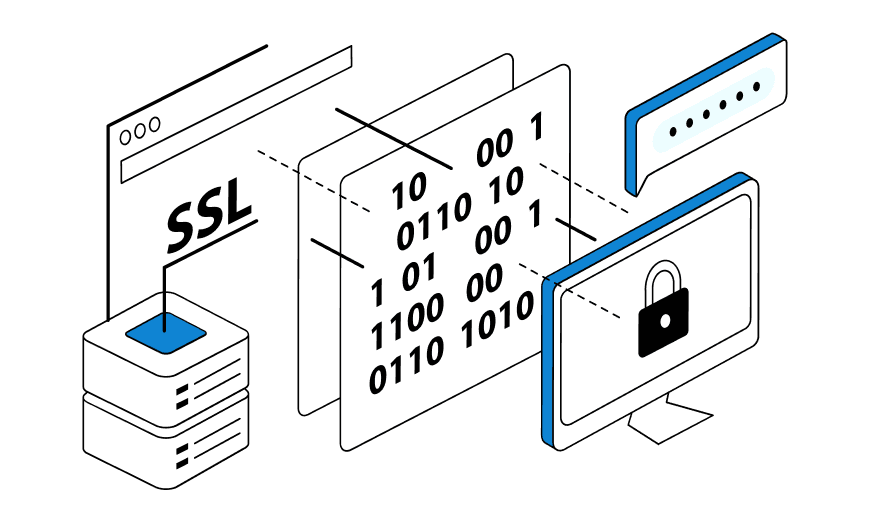
The modern market is not an arena of stability, but one of constant movement, where the price of goods can change faster than the exchange rate of cryptocurrency. In the era of online shopping and fierce competition, it is not enough for businesses to simply set a price and wait for customers. They need to be as flexible as a yogi and as precise as a Swiss watch. It is in this context that the concept of dynamic pricing is increasingly being heard.
Simply put, we are looking at a tool that allows companies to adapt the cost of their goods or services in real time. This is not a marketing gimmick or a temporary trend. It is a new reality in which those who can respond quickly to consumer behavior, demand, seasonality, and even the time of day come out on top. In this article, we will explore what dynamic pricing is, how it differs from the traditional approach, and why more and more companies are choosing this model.
Definition and essence of dynamic pricing
Dynamic pricing is a strategy in which the price of a product or service varies depending on external and internal factors. These include demand, inventory availability, competitor activity, customer behavior data, and even weather conditions. The system often works automatically, using algorithms and real-time analytics.
A classic example is airline tickets. The closer the departure date and the fewer seats available, the higher the price. But this is just the tip of the iceberg. Dynamic pricing algorithms are used in e-commerce, hotels, taxi services, streaming services, and even subscription websites. A dynamic price is a variable that is changeable and adaptive, calibrated for each specific moment.
How is it different from fixed prices?
The main difference is in the approach. With fixed pricing, a business sets a price once and for a long time, updating it only on holidays or in case of force majeure. This method is familiar but extremely inflexible. It does not take into account fluctuations in demand, competitors’ actions, or user behavior.
Dynamic pricing, on the other hand, offers constant market analysis and adaptation. For example, if you are the owner of an online store and see that a competitor has just lowered the price of a similar product, the system can automatically react and adjust your price. Or vice versa — if demand has skyrocketed and you are the only one left with the product in stock, why not raise the price and earn more?
Why businesses choose a flexible model
There are several reasons, and they are all quite pragmatic. First, it’s revenue growth. A flexible pricing model allows you to get the most out of each customer by offering the price they are actually willing to pay. Second, it’s competitiveness. In a highly competitive niche, being faster and smarter means winning.
In addition, dynamic pricing helps to better manage inventory, plan logistics, and launch personalized offers. And when combined with analytics and big data, it becomes a powerful lever for growth. That is why businesses, regardless of size, are increasingly betting on flexibility. After all, in a world where everything changes every hour, it is not the one with a strong price who wins, but the one with a competent strategy.
By the way, even to promote solutions such as mobile proxies from LTE Socks, companies are already using flexible pricing scenarios — offering different conditions depending on the user’s geography, time of day, and traffic type.
How dynamic pricing works
To understand exactly how a flexible pricing model works, you need to look behind the scenes at the numbers and algorithms. Dynamic pricing means not just frequent price changes, but accurate and thoughtful adjustment to market behavior. It’s like a game of chess, where every move is calculated in advance and depends on a variety of factors — from the mundane “what’s in the basket” to the global “how has traffic changed in the region.”
The system starts by analyzing input data — user, competitive, seasonal, and behavioral. Based on this data, the final price is calculated, which, ideally, should be optimal for both the buyer and the seller.
What factors influence price changes
There are many factors that shape dynamic pricing. Here are the main ones:
- Time of day and day of the week. Prices may rise in the evening, on weekends, or before holidays.
- Buyer’s geolocation. Prices in Kyiv and Chernivtsi may differ due to demand or logistics.
- User behavior. If you return to the same product several times, the system “remembers” this.
- Competitor activity. If a competitor offers a discount, the algorithm reacts automatically.
- Availability in stock. The less of a product there is, the higher its value — and price.
- Seasonal and external factors. Weather, economic events, social media trends — everything can have an impact.
This is what dynamic pricing means in action — flexibility based on data and instant response.
The algorithms and technologies behind it
It’s not magic, but powerful algorithms. These can be simple rules (e.g., “if demand is above normal, raise the price by 5%”) or complex neural networks trained on large data sets. Machine learning, predictive analytics, and artificial intelligence technologies are used.
Monitoring and analysis tools, such as Proxy checker, play a special role, allowing information to be collected from competitors’ websites without the risk of being blocked. This data is then fed into pricing systems and helps to make decisions based on the real market picture rather than blindly.
The role of supply and demand
The classics of economics are still relevant here. Dynamic pricing, which is defined as an instant response to the market, is based on supply and demand. If a product is at the peak of its popularity, the price rises. If interest falls, the price drops to stimulate purchases.
But now this system has become automated and accurate, without manual adjustments and delays. Algorithms analyze demand dynamics not once a quarter, but in real time. This makes it possible to predict a surge in interest, adjust the price in advance, and stay one step ahead of the competition.
Advantages and disadvantages
Any advanced technology brings not only opportunities but also challenges. Dynamic pricing is no exception. It can be a catalyst for growth if set up correctly, but it requires a mature approach and technical readiness from the business. Let’s take a look at what such a system offers and what pitfalls it may hide.
What the business gets
First and foremost, flexibility. The market has its own rules, and fixed prices do not always keep up with demand. With a dynamic model, a company can instantly adapt to changes. For example, if demand for a particular product rises sharply, you can quickly raise the price and increase your margin. And if interest in the product declines, you can make it more attractive in terms of cost.
If the price of a product changes, it is not always a mistake or a marketing ploy. Often it is the result of accurate analytics aimed at maximum efficiency.
Key advantages:
- Revenue growth. The price is adjusted to the customer’s willingness to pay here and now.
- Competitiveness. You can respond quickly to competitors’ actions without losing market share.
- Inventory management. Goods that have been sitting in the warehouse get a chance to be sold through price reductions.
- Personalization. The system can take into account the behavior history of each user and select the optimal price.
Incidentally, the technological base that supports such solutions often includes SIM card hosting and mobile proxies — these are what allow you to collect data in real time and monitor the market in different regions while remaining invisible.
What risks may arise
Nevertheless, we must not forget about the risks. Why do prices for goods change too often? Sometimes it is due to excessive automation. If the algorithm works without supervision, it can cause mistrust among customers. A buyer who sees a price difference within a few hours may feel cheated.
The main disadvantages:
- Loss of loyalty. People don’t like being confused: yesterday there was one price, today there is another.
- Algorithm errors. Imperfect settings can lead to dumping or unjustified price increases.
- Complexity of implementation. Technical infrastructure, analytics, and staff training are required.
- Ethical issues. A dilemma arises: how fair is it to set different prices for different people?
Thus, dynamic pricing is a powerful tool, but it is not a magic button that will make you earn more. It is a system that needs to be managed properly. Only then will it start to bring benefits, rather than questions from dissatisfied customers.

Examples of application in different industries
Today, dynamic pricing is not the future, but a reality for many businesses. And the more sensitive an industry is to fluctuations in demand, the more noticeable the effect of applying a flexible model. Let’s look at the most illustrative examples.
E-commerce
Online stores were the first to implement automatic pricing. In a highly competitive and constantly changing market, prices can change several times a day. Algorithms analyze user behavior, seasonality, and inventory levels and suggest a price at which the chances of a purchase are highest.
For example, if a buyer has viewed a particular product several times but has not added it to their cart, the system may slightly lower the price to encourage a decision. Or, conversely, if a product is actively viewed but is quickly running out, the price goes up. Thus, the price changes in proportion to the change in demand — a classic economic principle, but in a digital package.
To monitor competitors’ prices, proxies for anti-detection browsers are often used to collect information discreetly and effectively. This allows you to stay ahead of the game and not miss a single sales opportunity.
Airlines and hotels
If you have ever booked a plane ticket or a hotel room, you have already encountered dynamic pricing. Here, flexibility is not just an advantage, but the foundation of the business.
The price changes depending on a variety of factors: from the time of departure or check-out to the total number of bookings. The closer to the date of travel, the higher the price. On holidays and weekends, it is more expensive. In the off-season or in the middle of the week, it is cheaper. This approach helps maximize occupancy and revenue, manage customer flow, and distribute demand evenly.
Taxis and delivery
Taxi services are one of the most striking real-time examples. When it rains, there are traffic jams, and it’s Friday evening, the price of a ride goes up. When there are more cars than customers, it goes down. This is dynamics that can be seen with the naked eye.
Food and goods delivery works on the same principles: during peak hours, the cost of delivery increases, and during quiet times, it decreases. This approach motivates customers to place orders at different times and allows companies to regulate the workload on couriers.
When should dynamic pricing be implemented?
It is worth implementing a flexible pricing model when:
You face fierce competition and want to respond quickly to changes in the market. Responding quickly to price fluctuations by competitors allows you to maintain your market position and retain loyal customers.
Goods or services are subject to fluctuations in demand—by season, day of the week, or time of day. For example, demand for travel services, airline tickets, food delivery, or even clothing can change dramatically during certain periods. Flexible pricing allows you to adapt to actual demand at any given moment.
You have already accumulated enough data on customer behavior to build analytics on it. This includes purchase history, average check, order frequency, and response to discounts. Without this data, pricing will be “blind” and ineffective.
You are ready to invest in technological infrastructure — connecting automation, monitoring systems, analytics, using proxies and secure connections. Without automated solutions, it is impossible to track the market in real time and adjust prices at the required speed.
You have a complex or extensive product range that cannot be effectively managed manually. For example, in online stores with thousands of SKUs, manual price management becomes impractical and prone to human error.
You work in a niche where customers are willing to pay for speed, convenience, or personalization. In such cases, price dynamics may take into account not only demand but also user behavior: from the device they use to access the site to the time they spend on the product page.
It is important to remember that dynamic pricing is not an end in itself, but a tool. It only works when there is a clear strategy, transparent rules, and constant monitoring. Ill-considered use can cause a negative reaction from customers—for example, if the same product costs different amounts for different users for no apparent reason. This is especially sensitive in the B2C segment, where customers value a sense of fairness.
If approached consciously, dynamic pricing not only helps you earn more, but also gives you a deeper understanding of your market, reveals patterns in audience behavior, and builds long-term competitive advantages.
FAQ
1. How does dynamic pricing differ from standard pricing?
Standard (or fixed) pricing involves a single price that is the same for everyone and set in advance. It rarely changes, mainly at the discretion of management. Dynamic pricing is a flexible system in which prices can change in real time depending on demand, user behavior, seasonality, competition, and other factors. It is a kind of “smart” model where the cost is the result of analytics, not guesswork.
2. What technologies are needed for a flexible pricing model?
To implement dynamic pricing, a business will need:
- An analytics system (Google Analytics, Power BI, Looker, etc.);
- Automatic price change platforms;
- Databases on customer behavior;
- Competitor monitoring tools (including proxy checkers and proxies for anti-detection browsers);
- Integrations with the website, CRM, and warehouse.
Additionally, you may need to use mobile proxies or even specialized SIM card hosting if data is collected in large volumes and from different regions.
3. Is dynamic pricing suitable for small businesses?
Yes, especially if you have an online store, delivery service, or sell services online. Today, there are cloud solutions available that do not require huge investments. The main thing is to clearly understand your goals: do you want to sell off your remaining stock, increase the average check, or test the response to different price levels? For offline commerce, a simpler form of flexibility is suitable — by time of day, day of the week, or demand.
4. Can dynamic pricing be used in offline commerce?
Yes, but with limitations. Offline, dynamic pricing is not so much an “algorithm” as a system of flexible conditions: discounts at certain times, personalized offers based on loyalty cards, special prices when demand is high. Some large retailers already use digital price tags that allow them to change prices directly on the shelves — this is the offline version of the flexible model.
5. Does dynamic pricing affect customer loyalty?
It can — both positively and negatively. It all depends on transparency. If customers understand what dynamic pricing means and see it as fair (for example, cheaper during off-peak hours or personal discounts), they feel they are benefiting. But if prices fluctuate chaotically, without explanation, it causes irritation and suspicion. Therefore, it is important not only to implement the system, but also to explain it competently.









